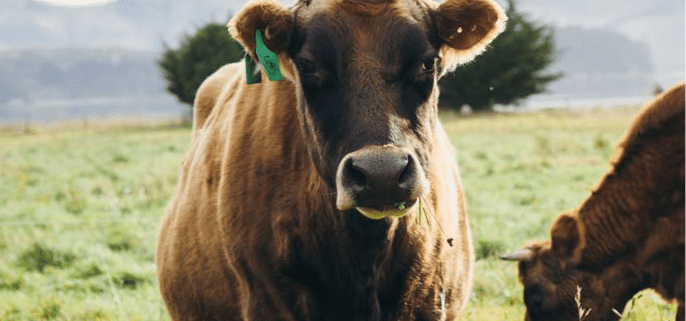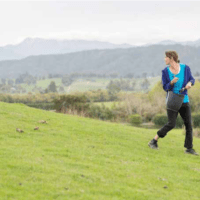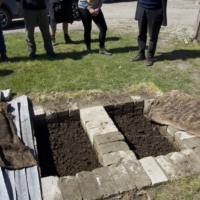The Cow and The Vine
Harvest Article – Winter 2015
By Shane Livingston
We all know about the important role cows play in biodynamics. Cows gift us horns and other body parts to be used as sheaths for the making of the preparations. They also give us dung for use in preparation 500, compost and barrel compost.
But what about the other factors that cows bring to a biodynamic property? The cow’s animal nature helps to even the balance between the mineral, plant, animal and human realms. Primarily, their heavy, earthbound nature helps ground the individual property to the earth. This works well within the vineyard, as vines in essence are forest canopy dwellers. They operate in the light/air spectrum of the property; hence they are grown on trellises that mimic trees.
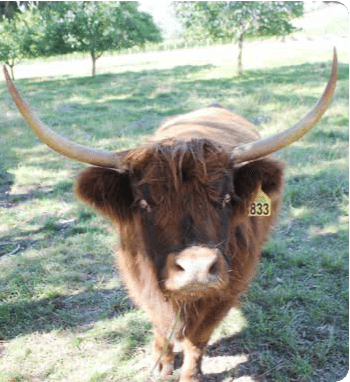
The Cow on the Vineyard
The cows contribute a vitality to this environment, stirring up insect life as they move around, stimulating other plants with their digestive actions, or as they brush past, stimulating a response in both the earth and plants alike. Much like a conductor, the cow has the ability to bring the earth and astral elements together on a property, as it is intimately involved in the whole household of nature.
In most cases we no longer use the cow to work the land. They have been replaced by horses or tractors. With the advent of modern viticulture and the narrowing of rows, the cow’s winter grazing role in the vineyard is limited due to its size.
The cow therefore has more of a supportive role rather than an active role in viticulture.
But perhaps cows’ most profound effect occurs within the people who connect to the property. Cows stimulate conversation, interacting with people through individual personalities; provide dung for collection; and provide sustenance for hungry pickers. In many ways they have a unique way of sensing the aura being of a person and drawing that energy into the property by actively engaging the person. Licking lips or nose is a sign of acceptance, whilst turning away may show displeasure if they sense an undesirable soul.
What does a cow require from us? Good quality food, water, room to move, shelter and companionship from both humans and other cattle. This is evident in the herd connections that develop at a soul level between people and cows.
Observing the effect of moving these animals onto an already established biodynamic property, one experiences an amazing transformation of one’s own understanding, and a deepening of vitality on the property. Interestingly, over time the people and the property begin to fall into the rhythm of the cow, with its steadfast connection to earth and the seasons. Hence observing and spending time with the cows daily on the property begins to guide the activities of the farm, particularly throughout the seasons, as the cows reflect the environment around them.
Annual Cycles of Dung
As the grass grows in the spring, their dung changes and freshens up, and new calves are born. It is a time of vitality, a time to use dung to make planting pastes for new vines. The rapid growth of new wet spring growth follows,
and the cows’ dung becomes watery, with not a lot of substance. It is best to return it to the pasture by harrowing it into the paddocks.
As the grass growth slows down and begins to lignify and mature, dung is collected for an early season CPP or spring compost; any excess can be returned back to the paddocks before shutting them down for haymaking. Late summer, as the paddocks dry up, grass growth slows. (Collect dung for cob buildings and stone walls etc. at this time.)
As we begin to head into autumn and the grass begins to grow again, the dung becomes the right consistency for preparations and CPP. This is also the time to begin stockpiling dung for autumn compost-making. At the coming of winter, grass growth stops, feed becomes limited, and often supplementary feeding is used. Dung can be used in pruning pastes or trunk sprays to lift the vitality of the vines.
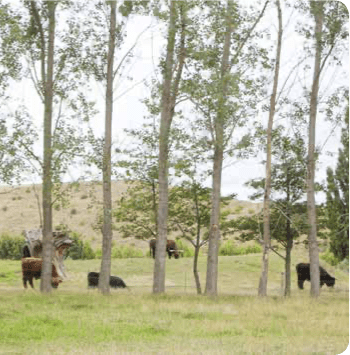
It’s important to take special care of the paddocks and areas that the cows graze upon, especially as it is easy to continually remove dung for various composts, teas, etc. In a vineyard ecology system, where production is based on the vine, it is easy to forget the paddocks. But 500 and other preparations should be applied to pastures first, as quality of food for the cow dictates the organisation of the property.
Cows and Wine
So what about the final wines? It is often said that biodynamic wines have a vibrancy of colour and a greater turbidity on the side of the glass, with pronounced anthocyanin development structure and balance.
One could argue that a cow is not needed on a biodynamic property. You can buy the preparations from the association or collect dung for compost from your neighbour’s cows, particularly when available land is at a premium for grapes. But perhaps the effect of a cow on an individual property and the earth, plants, animals and people that interact with it cannot be replaced, particularly in its role raising the consciousness of the people who are part of the property.
Finally, as kindly pointed out by James Millton: it is “always best to drink wine upstream from the herd”.

